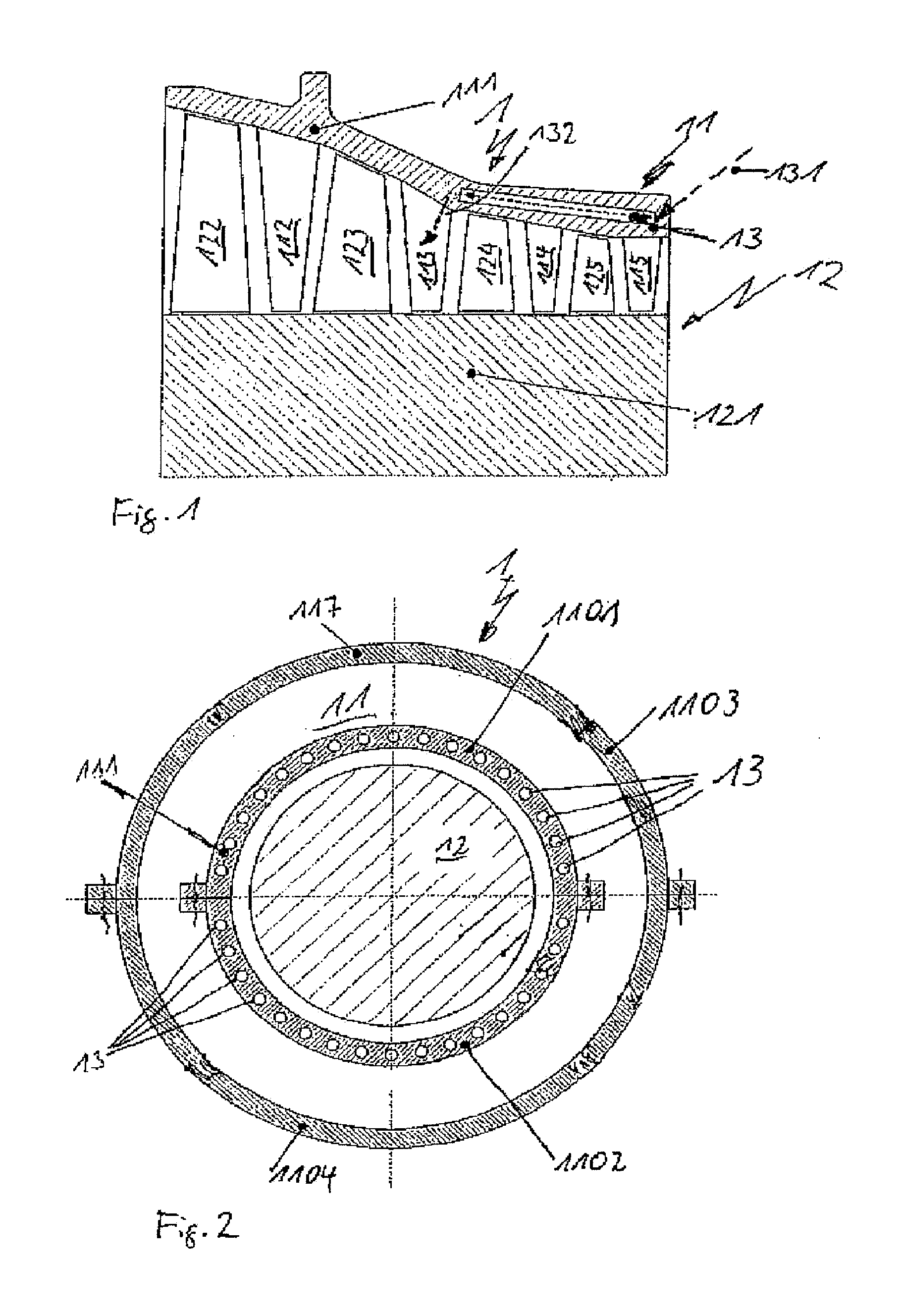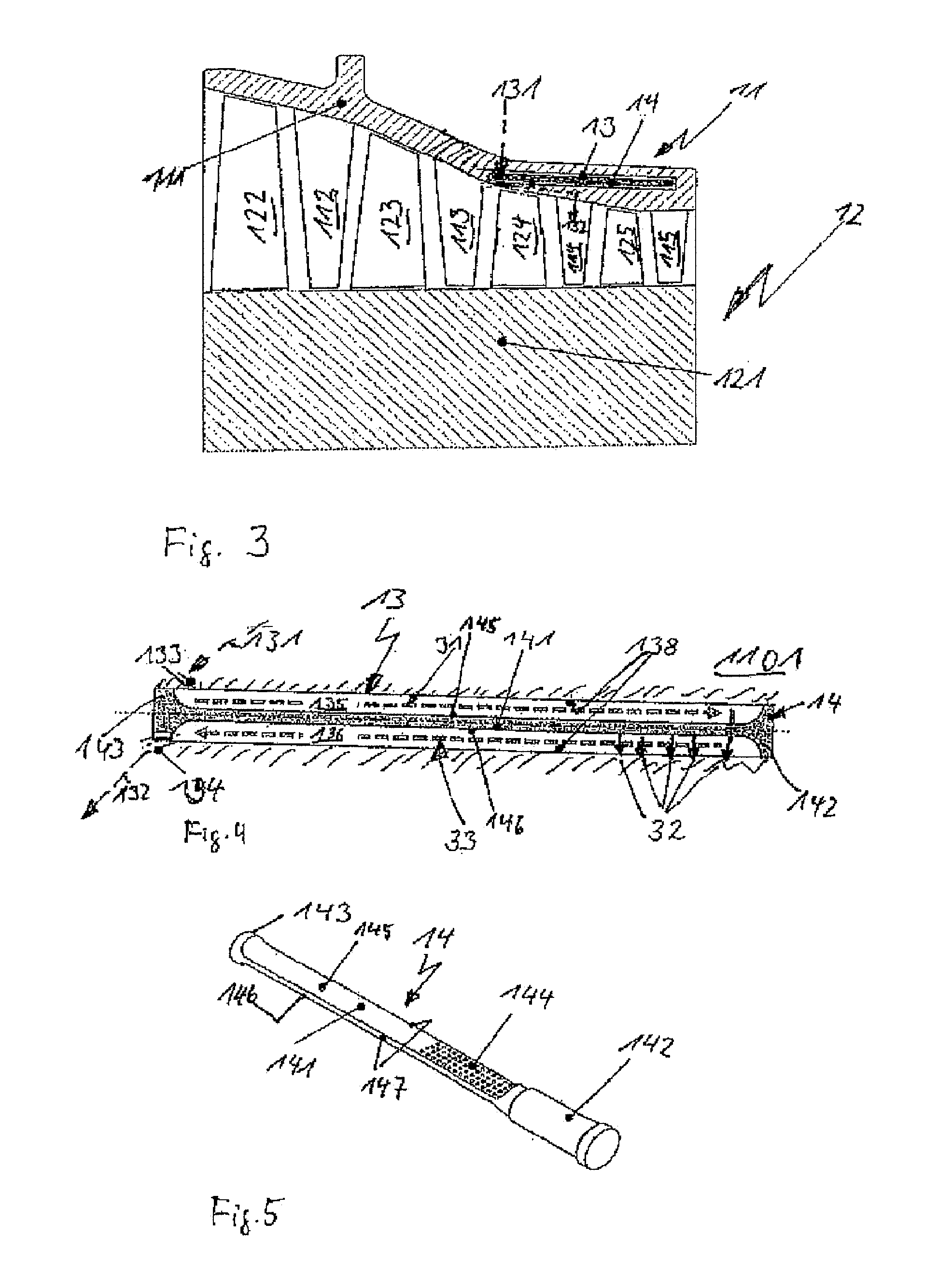Engine casing element
a technology of engine casing and elements, applied in the direction of liquid fuel engines, machines/engines, efficient propulsion technologies, etc., can solve the problems of performance degradation, no tight sealing can be applied, and the engine efficiency is reduced, so as to achieve the effect of reducing the loss of working fluid
- Summary
- Abstract
- Description
- Claims
- Application Information
AI Technical Summary
Benefits of technology
Problems solved by technology
Method used
Image
Examples
Embodiment Construction
[0079]FIG. 1 depicts in a schematic representation a longitudinal section through a multistage actual expansion turbine 1. Only one half of the turbine is shown for the ease of depiction. The turbine comprises a stator 11 and the rotor 12. The stator comprises an inner housing 111, an outer housing not shown in this figure, and vanes 112, 113, 114 and 115. Inner housing 111 also serves as a vane carrier to which the turbine guide vanes are attached. The rotor 12 comprises a shaft 121 and blades 122, 123, 124 and 125. As will be appreciated by a person skilled in the art, of working fluid main flow is flowing through the turbine along the blades and vanes from right to left in this illustration. The inner housing 111 comprises the clearance control cavity 13, extending essentially in an axial direction of the turbine. The clearance control cavity 13 is arranged in the region of the first two turbine stages and covers a range where the first and second stage vanes 115 and 114 and the ...
PUM
 Login to View More
Login to View More Abstract
Description
Claims
Application Information
 Login to View More
Login to View More - R&D
- Intellectual Property
- Life Sciences
- Materials
- Tech Scout
- Unparalleled Data Quality
- Higher Quality Content
- 60% Fewer Hallucinations
Browse by: Latest US Patents, China's latest patents, Technical Efficacy Thesaurus, Application Domain, Technology Topic, Popular Technical Reports.
© 2025 PatSnap. All rights reserved.Legal|Privacy policy|Modern Slavery Act Transparency Statement|Sitemap|About US| Contact US: help@patsnap.com



